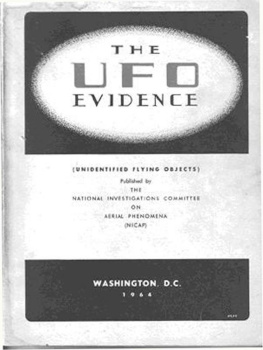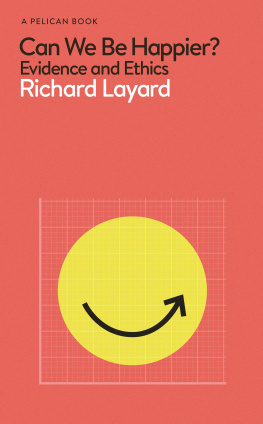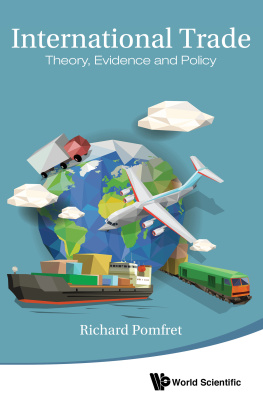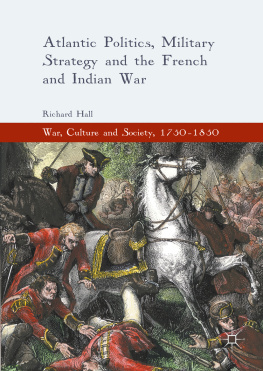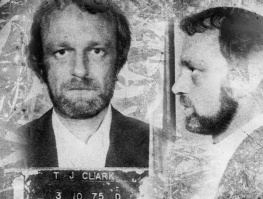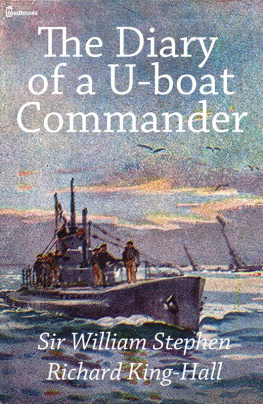Richard H. Hall - The UFO Evidence
Here you can read online Richard H. Hall - The UFO Evidence full text of the book (entire story) in english for free. Download pdf and epub, get meaning, cover and reviews about this ebook. year: 1964, genre: Non-fiction. Description of the work, (preface) as well as reviews are available. Best literature library LitArk.com created for fans of good reading and offers a wide selection of genres:
Romance novel
Science fiction
Adventure
Detective
Science
History
Home and family
Prose
Art
Politics
Computer
Non-fiction
Religion
Business
Children
Humor
Choose a favorite category and find really read worthwhile books. Enjoy immersion in the world of imagination, feel the emotions of the characters or learn something new for yourself, make an fascinating discovery.
- Book:The UFO Evidence
- Author:
- Genre:
- Year:1964
- Rating:4 / 5
- Favourites:Add to favourites
- Your mark:
- 80
- 1
- 2
- 3
- 4
- 5
The UFO Evidence: summary, description and annotation
We offer to read an annotation, description, summary or preface (depends on what the author of the book "The UFO Evidence" wrote himself). If you haven't found the necessary information about the book — write in the comments, we will try to find it.
The UFO Evidence — read online for free the complete book (whole text) full work
Below is the text of the book, divided by pages. System saving the place of the last page read, allows you to conveniently read the book "The UFO Evidence" online for free, without having to search again every time where you left off. Put a bookmark, and you can go to the page where you finished reading at any time.
Font size:
Interval:
Bookmark:
CONTENTS
INTRODUCTION. Page i - iii
Abstract.
Explanation of NICAP and its policies.
Statement by Board of Governors.
Section I. CROSS-SECTION DIGEST Page 1
Sample cases showing general features of UFO reports.
Section II. INTELLIGENT CONTROL Page 9
Cases indicating intelligence: pacing of vehicles, reaction to stimuli, formation flights.
SECTION III. AIR FORCE INVESTIGATIONS Page 19
Sightings by Air Force pilots, navigators, other officers and men.
SECTION IV. ARMY, NAVY & MARINE CORPS Page 29
Reports of other military personnel.
SECTION V. PILOT & AVIATION EXPERTS Page 33
Observations by airline, military and private pilots.
SECTION VI. SCIENTISTS & ENGINEERS Page 49
Observations by professional scientists and engineers, including astronomers and aeronautical engineers.
SECTION VII. OFFICIALS & CITIZENS Page 61
Sightings by police officers, civil defense and ground observer corps, cross-section of citizens' reports.
SECTION VIII SPECIAL EVIDENCE Page 73
Electro-magnetic effects. Radar cases. Photographic evidence. Physical and Physiological effects. Sound. Angel's Hair.
SECTION IX. THE AIR FORCE INVESTIGATION Page 105
Background of secrecy. Official regulations. History and analysis of the official UFO investigation.
SECTION X. FOREIGN REPORTS Page 118
A survey of reports from other countries, attitudes of foreign governments, and world-wide interest in UFOs.
SECTION XI. THE CHRONOLOGY Page 129
Chronological listing of sightings, statements and events.
SECTION XII. THE PATTERNS Page 143
Statistics and analyses of consistent physical appearance, maneuvers, flight characteristics, recurrent concentrations.
SECTION XIII. CONGRESS & THE UFOS Page 173
Survey of Congressional interest in UFOs.
SECTION XIV. THE PROBLEMS & THE DANGERS Page 179
Discussion of the implications of UFOs, and what is needed in the way of a scientific investigation.
ABSTRACT
A synthesis is presented of data concerning Unidentified Flying Objects (UFOs) reported during the past 20 years through governmental, press and private channels. The serious evidence is clarified and analyzed. The data are reported by categories of specially trained observers and studied by patterns of appearance, performance and periodic recurrence.
During the process of selecting the most reliable and significant reports, emphasis was placed on the qualifications of the observer and on cases involving two or more observers. This resulted in 746 reports being selected, after consideration of over 5000 signed reports and many hundreds of reports from newspapers and other publications.
An overall look is taken at the UFO problem: The historical development of the mystery, Congressional attitudes and activity, consideration of the problems and dangers involved, and discussion of what is needed in the way of organized scientific research.
Evidence is presented in support of the hypothesis that UFOs are under intelligent control, making plausible the notion that some of them might be of extraterrestrial origin.
INTRODUCTION
In an article for Yale Scientific magazine, April 1963, Dr. J. Allen Hynek (Chief scientific consultant to the Air Force on UFOs) said: "there are more reports per year now than there were in the early years of the 'flying saucer era'... [UFO reports] have been coming to the Air Force at the rate of better than one a day over the past fifteen years. - The daily press no longer carries such reports, except perhaps as fillers, because monotonously repeated items do not constitute news. But it is just this repetition that is of potential scientific interest." Dr. Hynek added that the intelligence of the UFO witnesses has been "at least average," often "decidedly above average," and sometimes "embarrassingly above average."
There are basically two explanations for the consistent, world wide reporting of UFOs every year: (1) widespread and presently unaccountable delusion on a scale so vast that it should be, in itself, a matter of urgent scientific study; (2) people are seeing maneuvering, apparently controlled objects in the atmosphere.
Of the two hypotheses, the second appears to be more reasonable and it is solidly grounded in empirical observations. It is also borne out, in enough cases to warrant far more scientific investigation, by instruments. [Section VIII]. However, the basic problem is to determine as conclusively as possible which hypothesis is correct. For obvious reasons, verification of the second hypothesis could be one of the most important discoveries of all time.
This report is an attempt to clarify the reliable evidence of UFOs, and to remove the fog of mysticism and crackpotism which has helped to obscure the real issues. These issues are (1) the factual evidence for UFOs and its interpretation; (2) official secrecy and its effect on efforts to arrive at truth.
Under no conditions is this report, or any part of it, to be considered an endorsement, acceptance or other recognition of any claims and beliefs of a philosophical, religious or spiritual nature. Diverse beliefs in these areas are being expounded by many cults, including individuals who use the UFO subject for the purpose of self-enrichment at the expense of an ill-informed public.
This report presents documented facts on the physical aspects of UFOs, which we believe should be investigated scientifically. If our hypotheses are correct they stand independently of, and do not prove, unsubstantiated tales of rides in "flying saucers." Our investigations have found no evidence to support these claims, but considerable evidence of fraud. This does not mean that we believe a meeting with space men is impossible. It merely means that the public is being misled by some unscrupulous individuals making these claims, whose false stories are beclouding serious evidence.
NICAP and its Policies
NICAP is a non-profit organization incorporated in the District of Columbia (1956). Our main goals and purposes are scientific investigation and research of reported unidentified flying objects, and encouragement of full reporting to the public by responsible authorities of all information which the government has accumulated on this subject. The U.S. Air Force is charged with the official investigation of UFOs, but has practiced an intolerable degree of secrecy keeping the public in the dark about the amount and possible significance of UFO evidence. [Section IX]. Therefore, we have urged Congressional hearings to help clarify the evidence and encourage a full scientific review, with the public being kept fully informed.
NICAP policy is set by a Board of Governors and carried out by the executive staff. Investigations are carried out by Subcommittees (field units) of specially trained and equipped personnel. Affiliates in four states also assist with investigations, and public relations work. Panels of Special Advisers assist with evaluations of data. The executive staffs are the only salaried employees.
NICAP is supported by membership fees and donations. (Associate Membership is $5.00, covering six issues of the membership bulletin, The UFO Investigator, published approximately bimonthly). Members assist the investigation, on their own in initiative, by submitting newspaper clippings, first-hand reports, and other leads to information. The current membership is approximately 5000, covering all 50 states and about 25 foreign countries. A Panel of Foreign Advisers (including lawyers, engineers, and other professionals) aids in data gathering on a world-wide basis.
NICAP has a secondary interest in all aerial phenomena, and has contributed to scientific studies of meteors and ice-falls. Data has been furnished to the American Meteor Society, various college and university departments, individual scientists, and to many hundreds of students at all levels. A recently formed NICAP Youth Council is encouraging young people to pursue a scientific interest in UFOs, aerial phenomena, and space travel.
Next pageFont size:
Interval:
Bookmark:
Similar books «The UFO Evidence»
Look at similar books to The UFO Evidence. We have selected literature similar in name and meaning in the hope of providing readers with more options to find new, interesting, not yet read works.
Discussion, reviews of the book The UFO Evidence and just readers' own opinions. Leave your comments, write what you think about the work, its meaning or the main characters. Specify what exactly you liked and what you didn't like, and why you think so.

